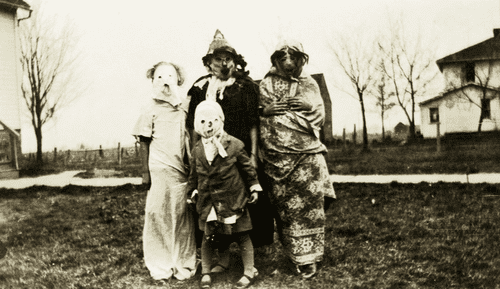I decided to take my daughter down to the waterfront and visit the Power Plant to see their current exhibitions exploring themes of climate change and identity across a changing urban landscape.
The Power Plant Art Gallery (231 Queens Quay West) is located on the Harbourfront and showcases several exhibitions around a variety of themes. Currently, there are four exhibitions in the art gallery ranging from black moths decorating the walls to looping video footage of Hollywood.
Upon walking into the gallery, Mexico City artist Carlos Amorles’ Black Cloud covers the walls and ceiling. About 30,000 black moths spread across the white landscape created an eerie and fragile image. The moths are symbolic of the transformation of the animal in the post-industrialist world. Prior to industrialism in England, moths were light in colour. When coal factories began creating high levels of pollution, black moths began appearing in the landscape.
The moths are indicative of the transformation of nature and space in a post-industrialist world. From a viewer’s perspective, the moths also look like black mold or an invasive species in the exhibit from afar. This is a subtle, but powerful comment on the effect of industrialization on the world.
The exhibition directly relates to the history of the Power Plant gallery as well. The art space was once an actual power plant for refrigeration and heating equipment for the Toronto Terminal Warehouse and was turned into an art gallery in 1987. It originally housed coal, which makes it a fitting venue for Black Cloud.
The second exhibit, The Political Nightfall by Aude Moreau, points strongly towards climate change and the development of the urban landscape. This art show focuses on a film reel on a loop, showcasing footage from Los Angeles to the Hollywood studios at night. It was shot from a helicopter and seems to move backwards between large and ominous downtown buildings. The buildings are very dark and it cuts out the light of the rest of the L.A landscape as you get further into the downtown sphere.
The footage reaches the twin buildings of the City National Plaza and spells out in the windows, “THE END.” A score of dark theatrical music plays in the background. The film represented the ever-looming presence of the large buildings that seem to block you from viewing the truth or even life itself. The screen becomes quite dark and instead of showing a scene teeming with life as one expects from a city landscape, it does quite the opposite. The city and its multinational corporations becomes the death of civilization.
Art has the ability to show the truth in subtle and profound ways, as both Amorles and Moreau achieve in their own creative mediums. In both cases, their exploration on climate change is fearful and dark, but it also demonstrates an honest portrayal of the future of humankind if we continue to live in the landscape that ignores the environment.


